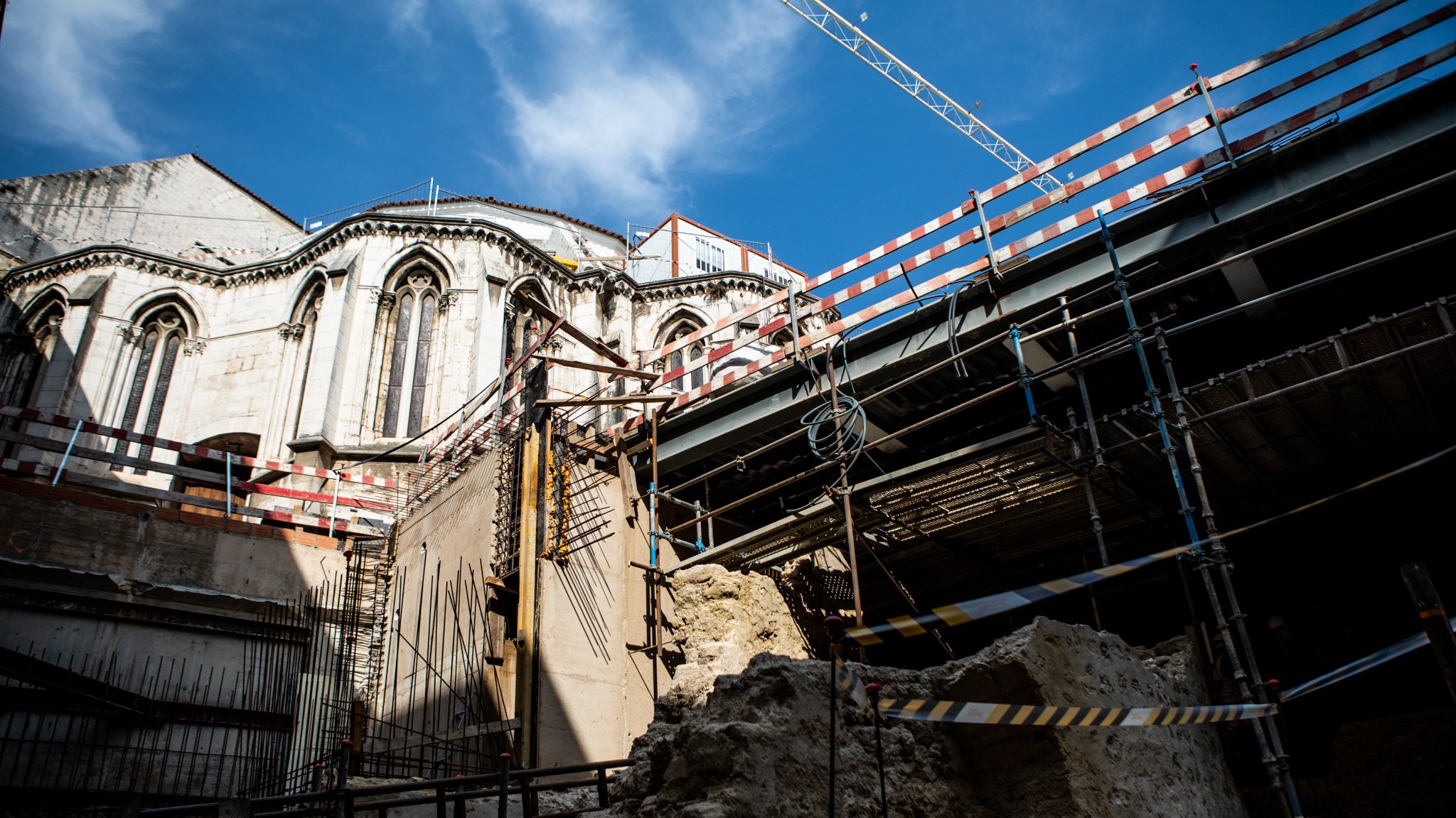The promoters of the petition “for the defense of the archaeological heritage in the cloisters of the Patriarchal Cathedral of Lisbon” appealed this Wednesday to the deputies of the Culture Commission to visit the work, which is approaching “a point of no return”.
In a hearing at the Parliamentary Committee on Culture, Communication, Youth and Sports, the three representatives of the petition, which had 3,150 signatures at the time of its admission to the Assembly of the Republic, reiterated that “the list of attacks on heritage in the course of this work is now complete.”extensive”.
According to the petition, “the problems are: the monumental Islamic building that can be integrated into the al-Ushbuna mosque complex; the channels and other structures, equally monumental, from Roman times and the Dionysian Cloister, within the scope of the ‘Project for the Restoration and Enhancement of the Patriarchal Cathedral of Lisbon — 2nd Phase — Installation of the Archaeological Center and Recovery of the Cathedral Cloister of Lisbon’”.
“It is imperative to review the project, canceling the underground floor once and for all, guaranteeing the stability, conservation and full visibility of the entire heritage and archaeological complex of the Sé Catedral de Lisboa, a National Monument, which provides us with a fantastic reading of the ancient city and that central and sacred place, in the ancient city”, can be read in the document.
The petitioners present in parliament are also part of the civic movement in defense of Lisbon Cathedral and had already been heard, in this context, by the same commission in July.
Since then, as the president of the Culture Commission, Luís Graça (PS), recalled, a PS request was unanimously approved for the hearing of the General Director of Cultural Heritage, João Carlos Santos, and the archaeologists responsible for the intervention, such as as well as for a site visit.
However, as explained by Luís Graça, the visit, which was already scheduled and had to be rescheduled due to the agenda of the parliamentary groups, will hardly take place before the work of the General State Budgets for 2023 is completed, in October , which will also take place with the audience of the Director General.
“I anticipate that it will be very difficult to make this visit before the budget work is finished,” said the president of the commission, prompting an appeal from the deputy of the Left Bloc Joana Mortágua, one of the three speakers at the hearing. . , together with Alexandre Poço (PSD) and Pedro Delgado Alves (PS) — so that an effort be made to schedule the visit as soon as possible.
Archaeologist Jacinta Bugalhão, one of the three promoters of the petition present, stressed: “I beg you, please, the Lisbon Cathedral is here. In two hours you can make the visit. I urge you, your presence there is very important and serves as pressure”, highlighting the importance of the civic movement being present at that visit and launching several accusations against the DGPC.
In July, the civic movement presented in parliament the recommendations of the report of the National Civil Engineering Laboratory on the works in the Lisbon Cathedral.
On the morning of June 25, the movement organized a human cordon in front of the Lisbon Cathedral, to warn of the threats to the archaeological remains within the scope of the works in progress, in contradiction with its objective of recovering the cloister, enhancing and musealization of the important archaeological heritage identified on the site.
The general director of Cultural Heritage, João Carlos Santos, at a press conference on November 29, said that the second revision of the project had managed to reconcile “the best of both worlds”, allowing “to show more than a third of what was planned, from the archaeological remains”, and by converting “the problem” of the initial proposal, into “a solution”.
The excavations carried out revealed medieval Roman, Islamic and Christian structures, after the conquest of the city in 1147, specifically remains of streets, cisterns, as well as an aljama and a wall with medieval Islamic graffiti.
Work on the Sé de Lisboa cloister began in the 1980s, with the first excavations, and one of the difficulties was the discovery of successive archaeological layers that the stratigraphic analysis had not anticipated, which caused interruptions, along the years, and the elaboration of different projects of requalification of the site.
The resumption of the works, taking as a reference the project presented in November, took place on March 28, about a year after the last suspension. Its completion was announced for the third quarter of this year.
Source: Observadora
